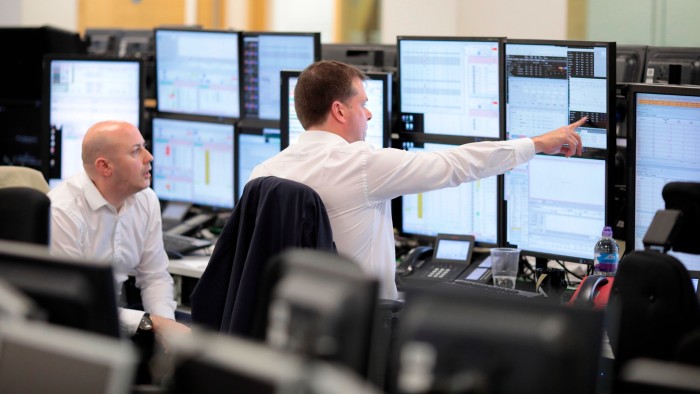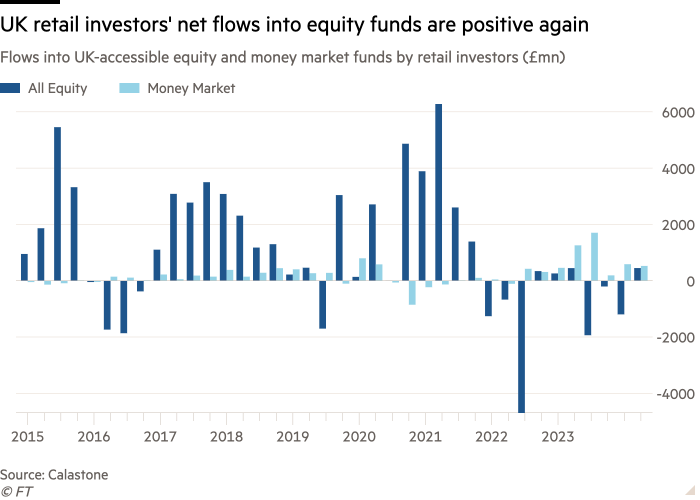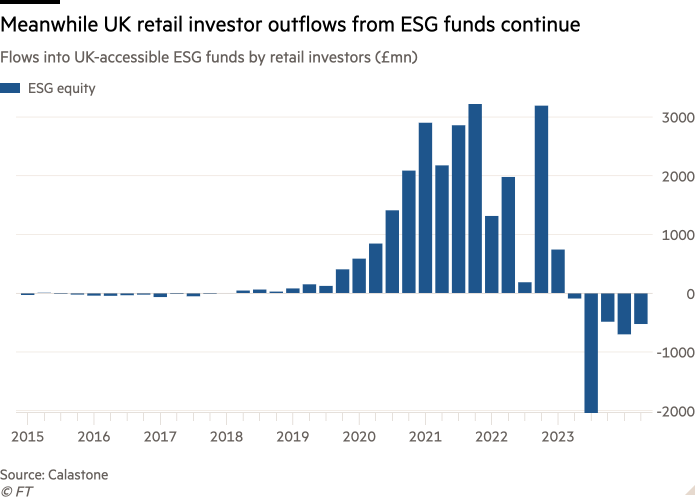UK investors return to equities as global markets stabilise

Roula Khalaf, Editor of the FT, selects her favourite stories in this weekly newsletter.
UK investors returned to equities for the first time in six months, as asset managers looked to reorientate their portfolios to account for brighter sentiment on inflation and interest rates.
Retail investors in the UK added a net £449mn to equity funds in November following half a year of net outflows, according to data from funds network Calastone. Data from trading platform Hargreaves Lansdown also shows investors are once again buying “risk assets”, such as US equity funds.
“November saw good news on inflation in the US, the UK and in Europe, which investors increasingly hope will stay the hand of policymakers deciding on the next move for rates,” said Edward Glyn, Calastone’s head of global markets.
“Equity prices duly rebounded during the month . . . [which] has tempted investors back into equity funds, favouring those parts of the world with better growth characteristics, like the US, and those that benefit when US interest rates start to fall, like emerging markets.”
Calastone’s figures are not comprehensive, but are widely seen as offering a useful snapshot of investment fund flows. They suggest that a more positive macroeconomic picture, led by strong US growth and inflation easing in the UK, have encouraged investors to deploy some of the dry powder that they have held in cash.

Calastone’s report indicates that investors were more confident that the US economy would experience a soft landing. They added £481mn of new capital into UK-accessible North American equity funds, the best month since June 2022. They also allocated £802mn to global equity funds and £111mn to Japanese funds.
This trend is expected to play out on an international scale as the macroeconomic picture crystallises. Analysts at Goldman Sachs said in a research note on their 2024 outlook that they believe “investors will look for opportunities to deploy cash in 2024 and are likely to find them in both equities and bonds.
“The fund flow cycle shows that large inflows into money markets are typically followed by a rotation into the other asset classes.”
“It seems that confidence is returning,” said Emma Wall, head of investment analysis and research at Hargreaves Lansdown, in a note. “Investors are buying into momentum — markets and sectors which have recently rallied [such as] India, tech stocks and the US — as well as broader cheap equity trackers with a heavy tech or US tilt.”
Investors nevertheless continued to sell UK-specialist funds and ESG funds, mostly domiciled in the US and UK, with £524mn of outflows for a seventh consecutive month. “The FCA is now taking action to counter allegations of greenwashing in the ESG sector, but investors are way ahead of them,” said Glyn. “The FCA’s action is likely to cast a further pall over the sector in the months ahead.”

There remain signs of caution, however, in UK investment flows. Data from Morningstar shows that UK-domiciled money market funds open to retail and institutional investors held over £1tn in September. Calastone reports that DIY investors added more than £500mn to money market funds in November, totalling over £4bn year to date.
Some analysts are looking to the moment investors begin to move their short-term money market funds into riskier assets.
“Money markets outflows are yet to materialise,” note Goldman analysts, “[which leaves] room for this dynamic to be at play into next year, especially as front-end rates are likely to decline in our view, reducing the relative attractiveness of cash.
Comments